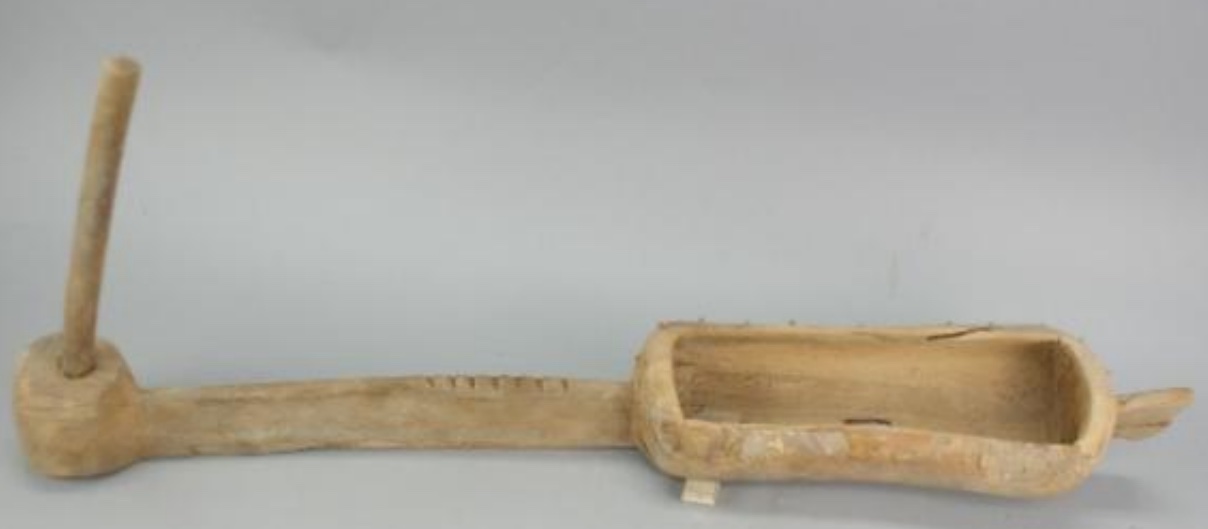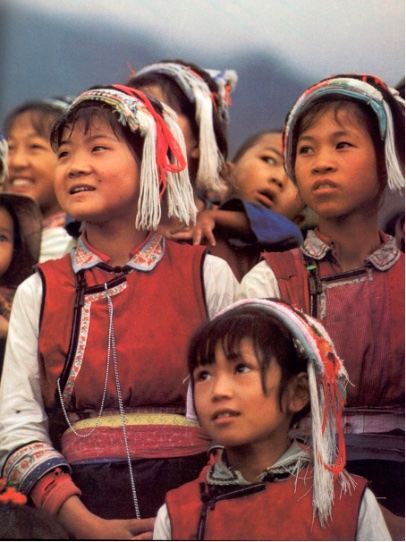Archive for Language and archeology
Shimao, graphic arts, and long distance connections
Introduction to the site:
"The importance of archeology for historical linguistics, part 2" (5/11/20)
I have written about Shimao informally before, but the more we keep finding out about it, the more I come to believe that it is the most important archeological site in China from before the beginning of our era.
Li Jaang, Zhouyong Sun, Jing Shao, and Min Li, "When peripheries were centres: a preliminary study of the Shimao-centred polity in the loess highland, China", Antiquity, 92.364 (August 22, 2018), 1008-1022.
Chinese archeologists continue to do work at Shimao, although with restrictions because of the sensitive nature of the site. We can expect additional publications about the site and its artifacts, including, for example, 20,000 bone needles (reported by Min Li who is writing a paper on the textile industry found at Shimao).
New article:
"King Carved In Stone Found at 4,200-Year-Old Chinese Pyramid Palace", by Sahir Pandey, Ancient Origins (8/11/22)
With copious illustrations from the site, including clear photographs of relief carvings and inscriptions. Astonishingly, in some respects they resemble figures from the mysterious Bronze Age site of Sanxingdui in Sichuan (southwestern China)
Read the rest of this entry »
Archaic Greek in a modern world, part 3
As the art historians Richard Barnhart (Yale) and Lukas Nickel (Vienna) have shown, Greek elements, images, and techniques reached into the mausoleum of the First Emperor of the Qin (259-210 BC) and the massive terracotta army entombed there. See "Of jackal and hide and Old Sinitic reconstructions" (12/16/18) and the many references thereto. The continuing research of Lucas Christopolous has cemented the presence of things Greek in East Asia even more securely. Here we present just one significant finding documented by Lucas' investigations, namely, the crouching position of warriors in the First Emperor's army and in my favorite artifact from Eastern Central Asia, a kneeling bronze statue from the south bank of the Künäs River, Xinyuan (Künäs) County, Xinjiang Uyghur Autonomous Region Museum Collection, exhibited in the University of Pennsylvania Museum in 2011. See object 44 on p. 155 of Victor H. Mair, ed., Secrets of the Silk Road (Santa Ana, CA: Bowers Museum, 2010). See also p. 47 here and p. 163 of Mallory and Mair, The Tarim Mummies (London: Thames and Hudson, 2000).
Notice that the bronze warrior is bare-chested, has a long nose and round eyes, is wearing a pleated kilt and helmet in a Trojan or other Greek style, and has additional Greek attributes. Since another similar figure was found nearby, this is not a one-off fluke. He is often said to be from the 5th c. BC, but see below for Lucas' slightly later dating.
Read the rest of this entry »
Archaic Greek in a modern world, part 2
[This is a guest post from Zhang He]
Dear Colleagues:
I am writing to you at the airport of Termez, a city on the southern border of Uzbekistan with Afghanistan. This city is so far the highest point of my trip. The city’s name is very likely after Demetrius, a general of Alexander the Great, who, after the death of Alexander, ruled this area. There are several important cultures that met here: Greek, Bactrian, Buddhist, and later Islam. A village 20 km north of the city is still called Macedon (!!!) after more than two thousand years! I went to a ruin called Kampir Tepe (Tepe means “hill”) which is believed to be one of the 80+ Alexandrias: Alexandria-Oxus (Alexandria on the Oxus River, which was later called Amu Darya). It was a citadel of Greco-Bactrians from 4th c. BCE to 2nd c. CE. It is believed that Alexander himself and his troops took six days to cross the river and started a settlement here. His third wife Roxana is from a nearby place in today’s Tajikistan (less than 60 miles). I saw big ceramic storage jars. The fragments were laid out on the ground by working archaeologists from more than two thousand years ago! Really amazing!
Read the rest of this entry »
Archeology and the recovery of ancient writing: bamboo strip manuscripts of seminal classics
My entire career as a Sinologist has been based on the study of archeologically recovered materials. I'm talking particularly about the medieval Dunhuang manuscripts, but also the Bronze Age and Early Iron Age Tarim mummies and their associated artifacts. It's no wonder, therefore, that I have featured the importance of archeology for the study of language and linguistics so often in my posts (see "Selected readings" below for a small sample).
Now comes news of the recovery of a spectacular cache of bamboo strip manuscripts from a Chu culture site kindly provided by Keith Knapp (with some Romanizations, links, and annotations by me):
Read the rest of this entry »
Tarim harps; pitch, tones, scales, modes, instruments, and their names
[This is a guest post by Sara de Rose, responding to requests for more information on the subject prompted by her previous post.]
This post discusses a possible connection between the Mesopotamian tonal system, documented on cuneiform tablets that span over 1000 years (from 1800 BC to 500 BC), and the musical system of ancient China. For a more detailed discussion, see the paper "A Proposed Mesopotamian Origin for the Ancient Musical and Musico-Cosmological Systems of the West and China", Sino-Platonic Papers, 320 (December, 2021) written by myself, Sara de Rose.
Since 1996, twenty-three harps (Chinese: “konghou”) that resemble the angular harp that was invented in Mesopotamia circa 2000 BC have been found in the graves of the Tarim mummies, in Xinjiang Uyghur Autonomous Region, an area of modern-day, western China. These harps date from 1000 BC to 200 BC (see photo).
Read the rest of this entry »
Pleiades: From Sumer to Subaru
 During the early part of my career, one of the most stunning academic papers I read was this:
During the early part of my career, one of the most stunning academic papers I read was this:
Roy Andrew Miller, "Pleiades Perceived: MUL.MUL to Subaru", Journal of the American Oriental Society, 108.1 (January-March, 1988), 1-25.
"Pleiades Perceived" was the presidential address delivered March 24, 1987 at the American Oriental Society's 197th Annual Meeting in Los Angeles. "Roy Andrew Miller (September 5, 1924 – August 22, 2014) was an American linguist best known as the author of several books on Japanese language and linguistics, and for his advocacy of Korean and Japanese as members of the proposed Altaic language family." (source)
Miller received his Ph.D. in Chinese and Japanese from Columbia University. He taught successively at the International Christian University in Tokyo, Yale University, and the University of Washington. He was (in)famous for his harsh reviews, to be compared only with those of Leon Hurvitz (August 4, 1923 – September 28, 1992), who also received his Ph.D. from Columbia and, after teaching at the University of Washington, ended his career at the University of British Columbia. Miller and Hurvitz both were immensely learned scholars who knew Chinese, Japanese, Tibetan, Sanskrit, and other challenging languages. I didn't meet Miller in person, but did study for one year with Hurvitz, who was extraordinarily eccentric.
Read the rest of this entry »
The cattle-keeping Bai of Yunnan
The province of Yunnan in the far south is home to more ethnic minorities and languages than any other part of China (25 out of 56 recognized groups, 38% of the population). The Bai are one of the more unusual groups among them.
Read the rest of this entry »
Sally Rooney bucket hat; Hittite, Ugaritic, and the alphabet
Earlier this week, my brother Thomas sent me the following note:
I recently read Beautiful World, Where Are You?, the latest novel by Irish millennial author Sally Rooney. As soon as I finished the book I started finding articles about her, including the famous Sally Rooney bucket hat. If you don't yet know about it, put Sally Rooney bucket hat into Google and you'll feel like you've been shipwrecked on a deserted island since the book came out in September.
I'm not sure if SR will go down in literary history, but I will say I can't stop thinking about the book. It's one of the few books I've read lately in which the characters discuss the big ideas: politics, religion, sex, and the collapse of civilizations.
The last is of great importance because the two main female characters are unmarried single women, and they're wondering why they don't yet feel the need to settle down and start families. Will they ever?
Read the rest of this entry »
Growing up Chinese in Uyghurstan
This post was inspired by Bruce Humes' "Growing up Uyghur in Xinjiang: 'Setting Sail in a Chinese-language World'” (12/22/21):
In China’s Minority Fiction, Sabina Knight notes how China is pushing its ethnic minorities — particularly the Uyghur in Xinjiang — to master Mandarin:
“The question of cultural survival haunts Patigül’s Bloodline《百年血脉》(2015). The novel situates the narrator—who, like the author, is half-Uyghur and half-Hui—within the matrix of the Han majority’s aggressive promotion of Chinese:
As my father, he needed to demonstrate that he knew about Chinese, but . . . his knowledge was [just] bits and pieces he’d picked up from other Uyghurs in the village, and he still spoke Uyghur most of the time; I, on the other hand, went to a Chinese school and was setting sail into a Chinese-language world. (trans. Natascha Bruce)
Read the rest of this entry »
The Hu Line: The significance of geography for historical linguistics
I have lived a long time. When I was in high school (1957-1961), geography was an important subject of the curriculum. When I went to college (1961-1965), there were still departments of geography in many, if not most, self-respecting colleges and universities, but they were slowly starting to disappear. Now, I suspect that there are very few, if any, schools, colleges, and universities that teach geography and train professors of that discipline. Still, there are vestiges of the days in the first half of the twentieth century when geography was upheld as a princely pursuit.
At Penn, there is a building that once housed the geography department and still has markings that bear witness to its pedigree, but has now been swallowed up by the School of Engineering and Applied Science. At Harvard, the Department of East Asian Languages and Civilizations (EALC) occupies what used to be the Department of Geography, in a building filled with geographical motifs that has a special history linked to the Widener family (who gave their wealth and their name to Harvard's main library in memory of Philadelphian Harry Elkins Widener (January 3, 1885-April 15, 1912) who went down with the Titanic at the age of 27. The Widener family also gifted Harvard with the building that presently belongs to EALC, as part of an endowment meant to create a geography professorship for a member of the Widener family. While I was teaching at Harvard, my office was in the penthouse of that building. It was an eerie feeling to be situated all alone in that aerie above all my peers and superiors.
Despite the support of the Wideners and its illustrious past, geography did not thrive at Harvard, Penn, and elsewhere. To me, this is cause for lament, and I have often pondered what forces have been at work that led to this unfortunate result.
Read the rest of this entry »
The Ossetes
Here at Language Log we know our Ossetes and have been learning much about Scythians (see "Selected readings"), so it is good to have this new (forthcoming) book by Richard Foltz:
The Ossetes: Modern-Day Scythians of the Caucasus
New York / London: I. B. Tauris / Bloomsbury, 24 February 2022
The Ossetes, a small nation inhabiting two adjacent states in the central Caucasus, are the last remaining linguistic and cultural descendants of the ancient nomadic Scythians who dominated the Eurasian steppe from the Balkans to Mongolia for well over one thousand years. A nominally Christian nation speaking a language distantly related to Persian, the Ossetes have inherited much of the culture of the medieval Alans who brought equestrian culture to Europe. They have preserved a rich oral literature through the epic of the Narts, a body of heroic legends that shares much in common with the Persian Book of Kings and other works of Indo-European mythology. This is the first book devoted to the little-known history and culture of the Ossetes to appear in any Western language. Charting Ossetian history from Antiquity to today, it will be a vital contribution to the fields of Iranian, Caucasian, Post-Soviet and Indo-European Studies.
Read the rest of this entry »
Ashkenazi and Scythians
It is not my intention to stir up a firestorm, but I have for decades suspected that the names "Ashkenazi" and "Scythian" are related. Now, after having sat on this for years and letting it gnaw away at my inwyt for far too long, I've decided to seek the collected expertise of the Language Log readership to see if there really is something to my suspicion.
Ashkenazi Jews (/ˌæʃ-, ɑːʃkəˈnɑːzi/ ASH-, AHSH-kə-NAH-zee), also known as Ashkenazic Jews or, by using the Hebrew plural suffix -im, Ashkenazim[a] are a Jewish diaspora population who coalesced in the Holy Roman Empire around the end of the first millennium.
The traditional diaspora language of Ashkenazi Jews is Yiddish (a Germanic language with elements of Hebrew, Aramaic, and Slavic languages), developed after they had moved into northern Europe: beginning with Germany and France in the Middle Ages. For centuries they used Hebrew only as a sacred language, until the revival of Hebrew as a common language in 20th century's Israel. Throughout their time in Europe, Ashkenazim have made many important contributions to its philosophy, scholarship, literature, art, music and science.
The term "Ashkenazi" refers to Jewish settlers who established communities along the Rhine river in Western Germany and in Northern France dating to the Middle Ages. Once there, they adapted traditions carried from Babylon, the Holy Land, and the Western Mediterranean to their new environment. The Ashkenazi religious rite developed in cities such as Mainz, Worms, and Troyes. The eminent French Rishon Rabbi Shlomo Itzhaki (Rashi) would have a significant influence on the Jewish religion.
Read the rest of this entry »


